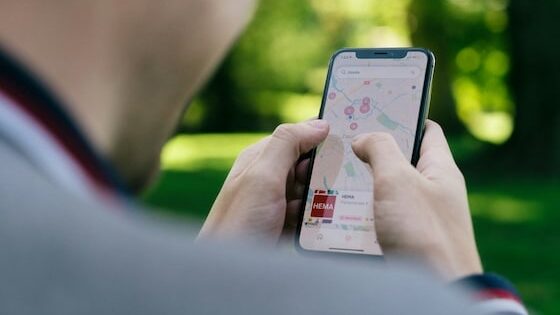Niantic continues to push the ball forward for immersive location-based advertising. After putting itself on the map with the 2016 launch of Pokémon Go (which is still going strong, despite less press attention), it has made a series of moves to maintain momentum in AR and location-based gaming.
Those moves include becoming a platform. After the success of Pokemon Go – and all the work it did to build location-based gaming architecture and scale it to millions of players – it decided to package it all up in an SDK for others to build location-based games. The Lightship platform was born.
To further diversify revenue – thus far including consumer in-app purchases and platform/ SaaS – it launched an ad business. It acquired immersive ad creation engine 8th Wall. The thinking was that all these location-relevant gaming experiences are a natural home for location-targeted brand marketing.
It had already experimented with this concept through its Sponsorship Platform that lets SMBs and multi-location brands plant themselves in Pokémon Go gameplay. We’re talking in-game rewards for visiting local businesses, which makes sense for players that want to refuel with coffee or food.
Rapid Rewards
Now, the latest evolution in Niantic’s ad business has been revealed. This week at the Cannes Lion Festival, it unveiled Rewarded AR ads. Building on the locally-oriented Sponsorship Platform noted above, this immerses players in branded content in the world around them during gameplay.
For example, players engaged in location-based gameplay (think: hunting Pokémon in a public park), can discover treasure boxes that contain rewards for a nearby coffee shop. Other formats will include floating balloons that are anchored to deliberate real-world places, just like organic in-game elements are.
The key word here is organic. Niantic is practicing the art of native ad integration. This contrasts formats like mid-roll video, banner ads, or other interruptive approaches. On another level, Rewarded AR is natural for certain types of local businesses, given the hunger worked up through migratory gameplay.
Powered by Niantic’s 8th Wall, these in-game placements include Pokémon Go. But as noted, Niantic’s core product is no longer its hit game but rather the Lightship platform. This brings Rewarded AR ads to a broader range of titles, while further attracting monetization-minded game developers to Lightship.
Food to Fashion
The strength of this move, and in Niantic’s inherent capabilities, is location relevance. As Localogy readers know, user intent often correlates to proximity. Mobile users out of the home are more likely to be closer – in both time and place – to transactions. We’re talking everything from food to fashion.
Niantic has this capability because of the location graph it assembled in the process of developing Pokémon Go. The byproduct is a world mesh and location dataset that enables it to precisely place content in location-deliberate ways (a key Lightship selling point)… including sponsored content.
In that light, Niantic specifies three main goals for Rewarded AR ads. First, it can increase brand and SMB awareness through immersive and organic storytelling. Second, it assists user purchase decisions through dimensional AR product visualizations. Third, location relevance can boost tangible foot traffic.
That last part makes this move fitting to SMBs. Like many things, this will start with larger brands before moving down market. And that’s already underway, as Circle K’s Rewarded AR campaign achieved a 76 percent engagement rate and a 95 percent completion rate. We’ll see if others jump on board.



